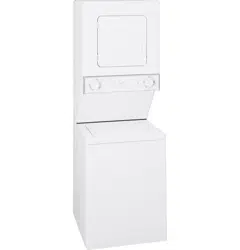Documents: Go to download!
User Manual
- User Manual - (English)
- Literature - (English)
- Installation Instruction - (English)
- Energy Guide - (English)
- HOW TO OPERATE YOUR WASHER
- ENERGY-SAVING TIPS FOR YOUR WASHER
- SUGGESTED FABRIC AND CYCLE SETTINGS FOR YOUR WASHER
- HOW TO LOAD YOUR WASHER
- HOW TO SORT CLOTHES
- HOW MUCH DETERGENT SHOULD YOU USE?
- HARD WATER—DO YOU HAVE IT?
- OTHER LAUNDRY PRODUCTS
- HOW TO REMOVE STAINS
- STAIN REMOVAL GUIDE
- HOW TO OPERATE YOUR DRYER
- SUGGESTED FABRIC AND DRYING SELECTIONS
- HOW TO SORT CLOTHES
- ENERGY-SAVING TIPS FOR YOUR DRYER
- CARE AND CLEANING
- QUESTIONS? USE THIS PROBLEM SOLVER
Table of contents
Use and Care Guide Spacemaker™ Laundry
HOW TO OPERATE YOUR WASHER
WARNING: To reduce the risk of fire, electric shock, or injury to persons when using your appliance, read the IMPORTANT SAFETY INSTRUCTIONS before operating this appliance.

Setting the Controls
Use the Suggested Fabric and Cycle Settings guide to help you make the proper selections.
- Select Water Level.
SMALL: Washer is less than 1/3 full of clothes.
MEDIUM: Between 1/3 and 2/3 full.
LARGE: Over 2/3 full.
For best cleaning results, the load must be able to move freely in the water. Too big a load or too little water can cause wear or tear of load items. - Select Wash/Rinse Temperature.
- Push Cycle Selector knob in and turn clockwise to your selected wash setting.
- Pull Cycle Selector knob out to start the washer. If you wish to change a setting after the washer has started, push in the Cycle Selector knob to stop the washer and reset to the new position. Setting can be changed at any time.
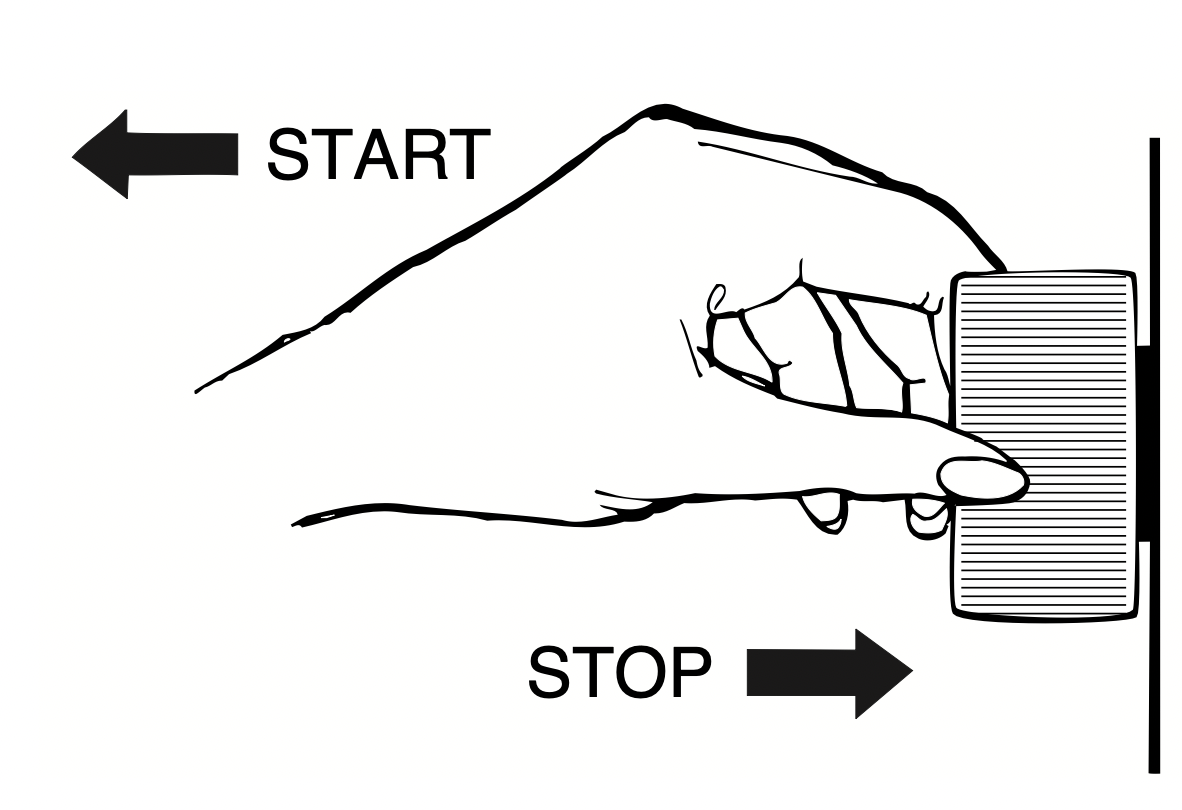
Washer Lid Latch
For easier loading convenience, use the washer lid latch.
To hold the washer lid up, lift the lid until it snaps past the latch under the control panel.
To release the lid, push the lid latch up.
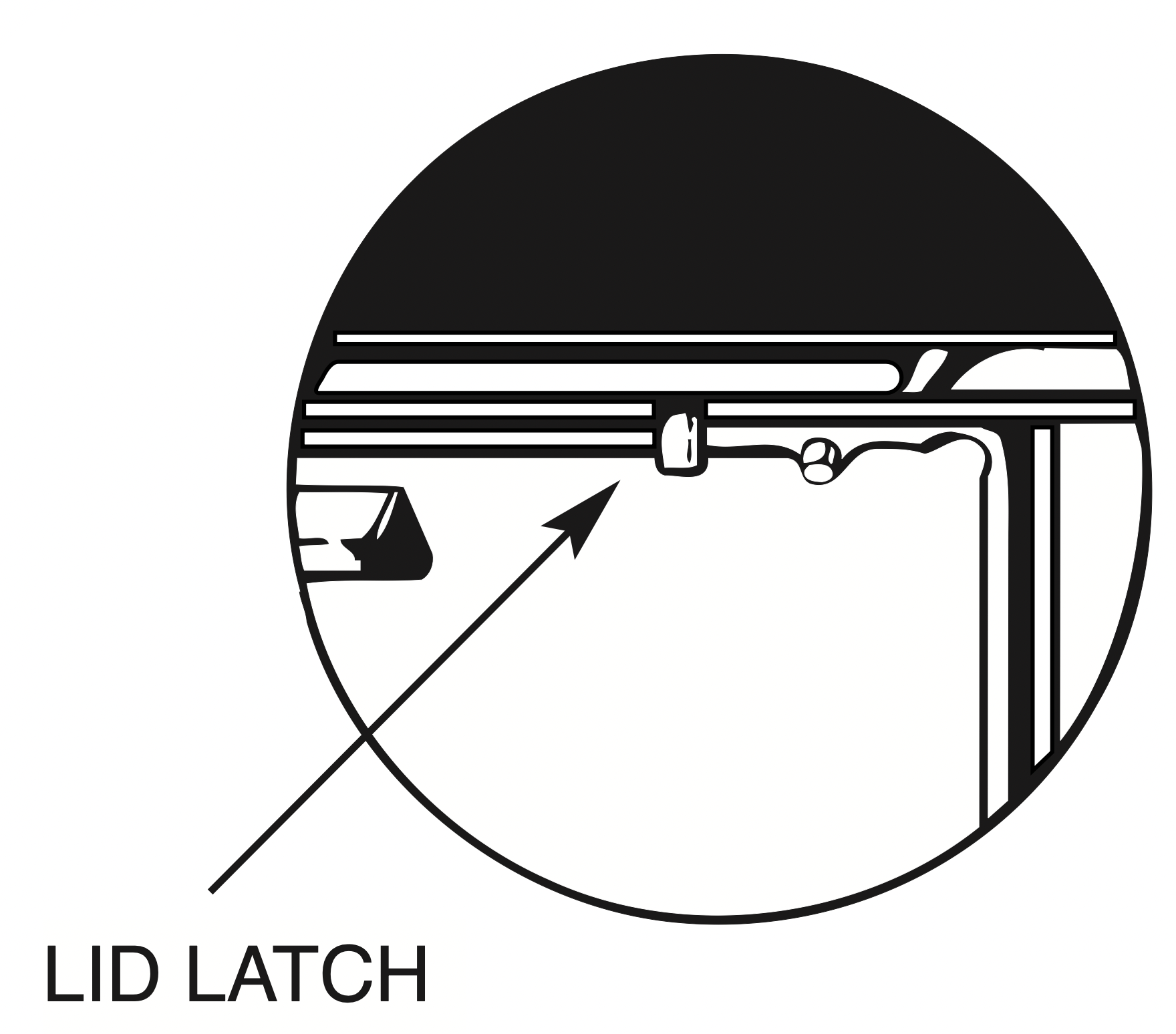
To Add Items After Washer Has Started
- Turn off the washer.
- Latch the washer lid.
- Add any additional articles by submerging them next to the agitator.
NOTE: When washing stockings, panty hose and other easily tangled items, always handle separately. To minimize tangling, we recommend the use of a net laundry bag.
How to Soak in Your Washer
Allow the washer to fill and agitate for a few minutes to dissolve the soaking agent. Then push in the Cycle Selector knob to stop the washer (keep lid closed) and allow to soak for as long as desired.
After desired soak period, pull out Cycle Selector knob to complete cycle.
Cycle Times — Total Cycle Times (Approximate Minutes)
NOTES:
- Total time includes pauses between each phase of the cycle.
- Total time does not include water fill times. Fill times vary depending on household water pressure and your selected water level.

Sorting and Loading
- Sort clothes carefully by fabric type, weight, color and amount of soil, according to instructions in How to Sort Clothes section.
- Add measured amount of detergent. See Detergents section for information on detergents and other laundry additives.
- Load clothes into wash basket, being careful not to overload. See How to Load Your Washer section.
- For information on how to use bleaches and fabric softeners, see Other Laundry Products section.
- Close the lid. Washer will fill but not spin with the lid open.
Manual-Clean Lint Filter
Clean the filter at the bottom of the agitator after every load for the best filtering results.
NOTE: The load type will vary the amount of lint buildup.
To clean:
- Lift off the agitator barrel.
See other models: GTDL210ED4WW JNM1541DP2WW LGB116BPA1WH GDT550HGD6BB TBX14SIBJLAA

- Wash or wipe the filter clean in the bottom of the agitator barrel. The filter is not removable.
- Replace the agitator barrel and snap it in to place.

ENERGY-SAVING TIPS FOR YOUR WASHER
If your clothes and household items don’t look clean and fresh after washing, you will probably rewash them…and that means you’ll waste energy. Remember to sort your clothes carefully, load them properly, select correct cycles, use enough detergent and choose a water temperature warm enough to release and get rid of soil.
- Try to wash less often. Save articles of the same type of fabric until you have a full load.
- If you must wash smaller loads, adjust the amount of water. Small loads should have lower water levels.
- Always rinse in cold water. The temperature of the rinse does not affect cleaning.
- Wash in off-peak utility hours. Your local utility can tell you which are the off-peak hours.
- Use your washer’s Normal Spin. This will remove more water during spin, which will shorten the drying cycle to save more energy.
SUGGESTED FABRIC AND CYCLE SETTINGS FOR YOUR WASHER
|
Cycle Suggested |
For Clothes Load/Fabrics such as: |
| Permanent Press and Knits |
|
| Delicates |
|
| Regular |
|
|
Special Instructions |
|
| *Down-Filled Garments |
Wash frequently to fluff up the down and retain the garment’s warmth. WASH SEPARATELY. Wet down gives off an odor which may be absorbed by other garments. Odor disappears when garment is dry. Treat heavily soiled areas with liquid detergent or a paste made of water and powdered detergent. Close zippers. Wash 2 or 3 garments at a time or add towels to balance. GARMENT MUST BE TUMBLE-DRIED. |
HOW TO LOAD YOUR WASHER
This illustration, with clothes just reaching the Clothes Retaining Ring, shows a proper load. Clothes have ample room to move because they are not packed down, nor wrapped around the agitator. Clothes are loaded dry since wet items are likely to pack down which encourages overloading. This size load requires a full water fill.
What is the best size load of clothes—large, medium or small? Save time, energy and detergent by avoiding extra use of the washer. Try to wash a full load of clothes. If you can, it is better to save clothes until you have a full load. If you must wash smaller loads, save water, energy and detergent by adjusting the water level for the size of the load.
See Operating the Washer.

- Load clothes dry.
- Take a properly sorted group of clothes and drop them loosely in the wash basket in this order:
- Large items—like sheets. Do not wrap around the agitator.
- Small items—like washcloths.
- Medium size items—like towels.
DO NOT OVERLOAD YOUR WASHER.
- Try to mix large and small items in each machine load for better washing action.
- Wash large items (blankets, bed spreads, mattress pads, etc.) separately.
- If machine is overloaded, you may experience oversudsing or out-of-balance conditions.
HOW TO SORT CLOTHES
Sort by Surface Texture

LINT PRODUCERS—such as terry toweling and chenille—give up lint.
LINT COLLECTORS—such as manmade fibers and napped fabrics like velveteen and corduroy—attract lint. These must be washed separately.
For more information on lint control, see the Problem Solver section.
Sort by Fabric

In addition to sorting to reduce lint collection, it is recommended that fabrics of similar construction be washed together whenever possible.
Sort by Soil

Sort by Color

For instructions on different fabrics and loads, see the Fabric and Cycle Settings guide.
It pays to check and prepare clothes for washing.
- Empty pockets, brush out cuffs, zip zippers, and fasten snaps, hooks and buttons.
- Do any necessary mending—rips, hems, tears.
- Check all items for areas of heavy soil or stain.
- Remove stains. See Stain Removal Guide.
- Turn poly knits inside out to minimize fabric surface damage.
EXTRA CLEANING
(See Tips to Help You Select Washer Settings section for instructions.)
See Stain Removal Guide.
See Fabric and Cycle Settings guide.
See the Problem Solver section.
Soaking and Pretreating—a good way to loosen deep soils and stains.
A thorough soaking with detergent or special soaking agent is another way to remove heavy soils, embedded dirt and even some stains.
Soaking can be either a completely separate washing step or a preliminary step to a complete wash cycle. For detailed information on how to soak in your washer, see How to Soak in Your Washer.
FOR INFORMATION ON SOAKING AGENTS, see Other Laundry Products guide.
- Pretreat heavy soil by rubbing in a small amount of liquid detergent or a paste made of water and powdered detergent or soap. For best results, wait 1/2 hour before washing.
HOW MUCH DETERGENT SHOULD YOU USE?
The use of a sufficient amount of detergent is one of the most important things you can do to make sure your wash comes out clean.
Amount required varies according to:
- Water hardness
- Amount of soil
- Size of load
- Type of detergent
- Wash temperature
Use more detergent if you have…
- Hard water
- Large loads
- Greasy or oily soils
- Lower wash temperature
- Low-phosphate detergent
If the recommended amount of detergent produces too many suds, switch to a lower sudsing detergent brand, and follow instructions on package.
Using too little detergent is a common cause of laundry problems. Always measure detergent in a standard measuring cup.

How to use detergentgranular, powdered or liquid: For best results, add detergent to the wash basket before loading clothes. If you load your clothes first, add detergent next to the agitator.
HARD WATER—DO YOU HAVE IT?
Before you can decide what to do about hard water, you need to know if you have it and, if so, how hard it is.
- If you live in a municipal area, contact your water company.
- If you live in a rural area, or in some suburban areas, contact your county agent.
The answer will be “you have ‘so many grains’ per gallon (3.8 liters).” This means:
- 0 to 3.5 grains per gallon (3.8 liters)—SOFT
- 3.6 to 7 grains—HARD
- 7.1 to 10.5 grains—VERY HARD
- 10.6 grains and over—EXTREMELY HARD
If your water is SOFT, you have no problem. You can use soap or detergent as you prefer and forget all about hard water. If you have HARD water—less than 10 grains—and you use phosphate detergent, you also have no problem.
But, if you have more than 10 grains, you will need to soften your water with either…
- An installed water softener in your home, or
- The use of a packaged water softener.
For information on water softeners, see the manufacturer’s recommendations.
OTHER LAUNDRY PRODUCTS
|
Laundry Product and Type |
How to Use It | Special Instructions |
|---|---|---|
|
BLEACH Nonchlorine such as Clorox 2 brand |
Pour diluted bleach next to the agitator. Follow package directions. |
May be used on most fabrics. Test fabric first. |
|
FABRIC SOFTENERS |
Follow package directions for diluting softeners. |
|
|
SANITIZER |
Use in case of infection and contagious disease. See under Bleach above. |
Guards against infection by killing most bacteria and viruses. |
|
WATER SOFTENER Precipitating such as Borax brand |
Follow package directions. Add at start of wash cycle. Follow package directions. Add at start of wash cycle. |
Suspends hardness minerals in solution, keeping water clear. Combines with water hardness minerals to form precipitate which gives cloudy or milky appearance to water. |
|
SOAK AGENT |
Follow package directions. |
For best results, soak garments a minimum of 30 minutes. |
|
PRETREATING, STAIN AND SPOT REMOVERS |
Follow package directions. Treat only heavily soiled areas. Check garments’ care labels for instructions. |
CAUTION: Washer control panels and finishes may be damaged by some laundry pretreatment soil and stain remover products if such products are sprayed on or havedirect contact with the washer. Apply these pretreatment products away from washer. The fabric may then be washed normally. Damage to your washer caused by pretreatment products is not covered by your warranty. |
|
TINTS AND DYES |
Follow package directions. NOTE: Tinted garments may not be colorfast. Wash separately. |
Clean washer to avoid discoloration of next load. Go through complete cycle (5-minute wash) using hot water, 1/2 cup (120 ml) detergent, 1 cup (240 ml) bleach. Wipe exterior parts. CAUTION: Tinting may discolor plastic in washer. Subsequent washings will reduce discoloration but may never eliminate it. |
HOW TO REMOVE STAINS
- Try to remove stains as soon as possible.
The fresher the stain, the easier it is to remove. - Before attempting to remove any stain, take these steps:
Find the fabric in the chart on the next page, and use only recommended methods.
Check the care label instructions that came with the garment.
Test stain removal product on a hidden inside seam or on a sample of the material.
Avoid use of hot water on unknown stains. It can set some stains. - Follow stain removal with a thorough rinsing.
- Wash with recommended amount of soap or detergent.
Stain Removal Hint—Using Chlorine Bleach for White and Bleachable Fabrics
Mix 1/4 cup (60 ml) chlorine bleach with one gallon (3.8 liters) of cool water—approximately 80°F (27°C)—in a sink or pan. Soak stained area for 5 minutes and launder in washer.
The Case of the “Invisible” Stain
Food or cooking oils on your synthetic garments may cause stains which are virtually invisible and which you may not notice as you put your clothes into the washer.
If these stains are not completely removed in the wash, the oily spots may pick up dirt from the wash water. Then they will become very visible and you may think they were caused by the wash cycle itself.
Once These Spots Become Visible, How Can You Remove Them?
- Rub in undiluted liquid detergent and let stand 30 minutes.
- Rewash using hottest water the fabric can stand.
How Can You Prevent These “After-You-Wash” Stains?
- Increase the amount of detergent normally used.
- Increase water temperature where fabric will permit.
- Wash synthetic garments more often.
STAIN REMOVAL GUIDE
| Stain |
White and Bleachable Fabrics |
Other Washable Fabrics |
|---|---|---|
|
Adhesives (Chewing Gum, etc.) |
Rub with ice or immerse in very cold water. Use dull tool to carefully scrape off as much adhesive or gum as possible. Sponge with a safe dry-cleaning fluid*; then launder. |
Same as white and bleachable fabrics. |
| Antiperspirants, Deodorants |
Apply undiluted liquid detergent. Rinse. If stain remains, bleach according to the Stain Removal Hint; launder. If color has changed, you may be able to restore it by sponging with ammonia.** Rinse thoroughly. |
Same as white and bleachable fabrics except use nonchlorine bleach. |
| Blood |
Soak in cold water; then launder in warm water. If stain remains, bleach according to the Stain Removal Hint; launder. |
Sponge or soak in cool water; then launder. |
|
Chocolate, Cream, Ice Cream and Milk |
Soak in cold water. Treat stain with a safe dry-cleaning fluid*; apply undiluted liquid detergent; launder; dry. Bleach according to the Stain Removal Hint; launder. |
Soak in cold water. Sponge with a safe cleaning fluid.* Apply undiluted liquid detergent. Launder in warm water. |
| Coffee and Tea | Without cream: Bleach according to the Stain Removal Hint; launder. With cream: Follow guide directions for Cream. |
Sponge with warm water. If stain remains, apply warm glycerine, let stand 30 minutes and rinse well, or sponge with a safe dry-cleaning fluid.* Launder. |
|
Cosmetics: Eye Shadow, Lipstick, Mascara, Liquid or Pancake Makeup, Rouge, Powder; Crayon; Grease, Oil, Tar, Cod Liver Oil |
Treat stain with safe dry-cleaning fluid.* Apply undiluted liquid detergent; launder and dry. Bleach according to the Stain Removal Hint; launder. |
Sponge with a safe dry-cleaning fluid.* Then launder in warm detergent water. |
| Fresh Fruit, Fruit Juices, Wine, Vegetables or Food Coloring | Soak stain in cool water. If stain remains, bleach according to the Stain Removal Hint; launder. |
Sponge with warm water. Bleach remaining stain with nonchlorine bleach. |
| Grass, Foliage, Flowers, Mildew, Scorch | Apply undiluted liquid detergent. Launder. (Treat mildew spots while they are fresh, before mold has a chance to weaken fabric.) If either type stain remains, bleach according to the Stain Removal Hint; launder. (Severe scorch cannot be removed.) |
Sponge with warm water. Apply undiluted liquid detergent. Bleach remaining stain with nonchlorine bleach; then launder. Old mildew stains can seldom be removed. Scorch can seldom be removed. |
| Ink, Ballpoint |
Fresh stains: Place stain face down on an absorbent towel and sponge with dry-cleaning fluid*; or use spray cleaner. Apply undiluted liquid detergent. Old stains: Bleach according to the Stain Removal Hint; launder. |
Same as white and bleachable fabrics except launder using nonchlorine bleach. |
| Paint and Varnish | Soften with oil or petroleum jelly; then sponge with banana oil. Launder in warm water. |
Same as white and bleachable fabrics. |
| Perspiration |
Apply undiluted liquid detergent and launder in warm water. If color has changed, you may be able to restore it by treating with ammonia or vinegar.** If any stain remains, treat with safe dry-cleaning fluid* or bleach according to the Stain Removal Hint; launder. |
Launder in warm water. Rinse well. Bleach with nonchlorine bleach. |
| Rust |
Apply rust remover,** using manufacturer’s directions. Rinse and launder. |
Same as white and bleachable fabrics. |
CAUTION: Because cleaning fluids tend to be toxic, be sure you are in a well-ventilated room when using them. No cleaning fluid should be used unless user is familiar with the limitations and required cautions (usually printed on label). Use extreme caution with flammable compounds.
Under no circumstances should fabrics containing flammable materials (waxes, cleaning fluids, etc.) be washed in the washer.
**Do not mix chlorine bleach with ammonia or acids such as vinegar and/or rust remover. Mixing can produce a toxic gas which may cause death.
Save and refer to garment manufacturers’ care labels.
HOW TO OPERATE YOUR DRYER
WARNING: To reduce the risk of fire, electric shock, or injury to persons when using your appliance, read the IMPORTANT SAFETY INSTRUCTIONS before operating this appliance.

Check the Lint Filter
Clean the lint filter each time the dryer is used. Always be sure the lint filter is in place.
WARNING: Do not run the dryer with the lint screen loose, damaged, blocked or missing. Doing so can cause overheating, damage fabrics and be a fire hazard.
The lint screen is located inside the dryer drum, on the back wall.
To clean:
- Use the finger holes to pull the lint screen straight out.
- Lightly squeeze the body, as shown while pulling the cover off.
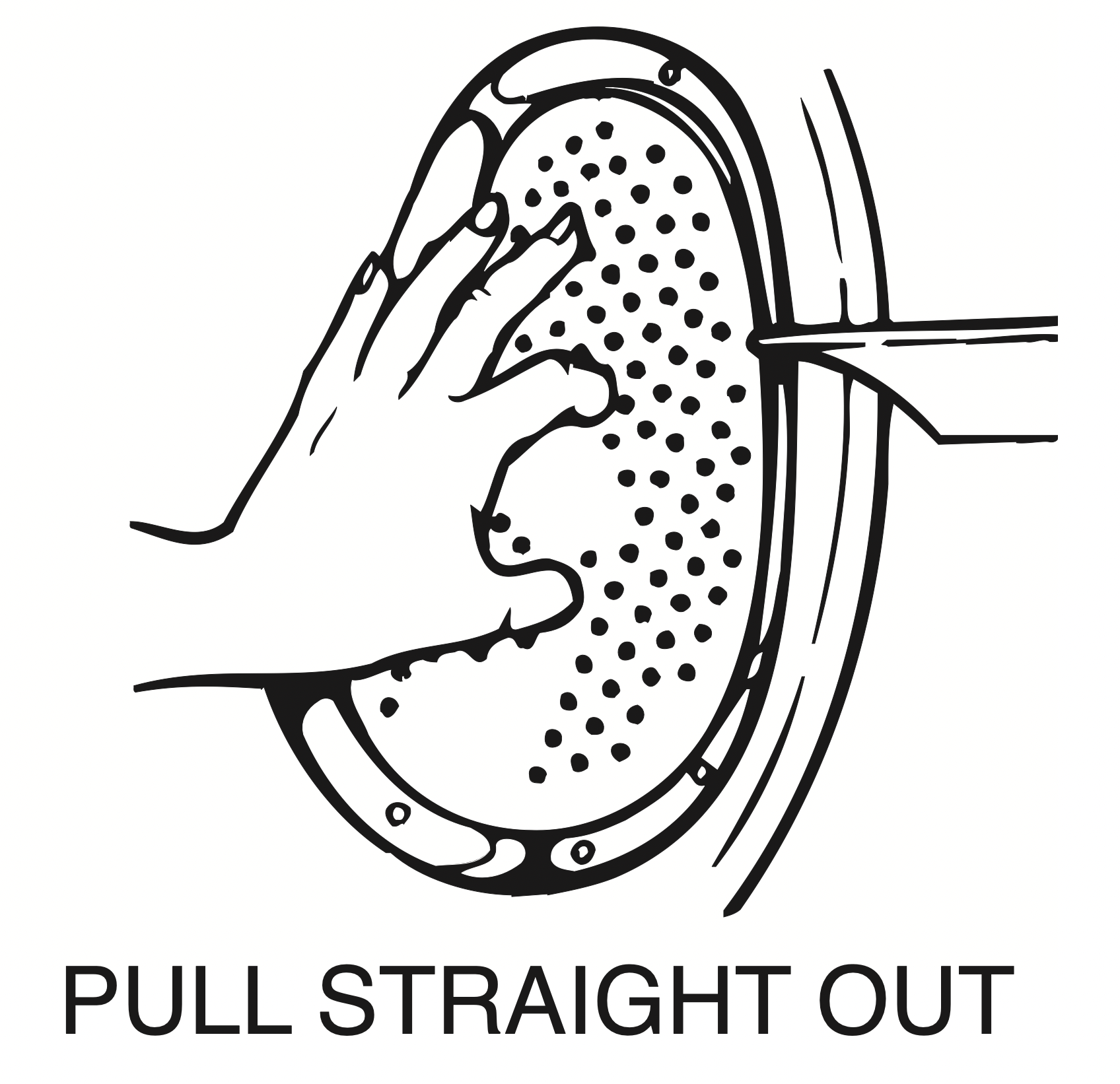
- ROLL lint off the screen with your fingers. Do not rinse or wash the screen.
- Replace the cover on the body of the lint screen.
- Before replacing the lint screen, remove any lint from the wire mesh on the back wall (behind the lint screen).
- Push the lint screen straight back until it snaps into place.

Sort and Load the Clothes
Good sorting for the dryer begins at the washer. Generally, if clothes are sorted right for washing, they’re sorted right for drying. See the How to Sort Clothes section.
If you do mix various types of fabrics in your load, set the controls for the lighter-weight fabrics and remove when dry. Reset controls for the remaining heavier fabrics.
Set the Controls
See the Suggested Fabric and Drying Selections guide.
- Cycle Selector.
Turn the Cycle Selector to the desired cycle setting.
The selector may be turned in either direction. - Start Button.
Press the Start button to start the dryer. (Opening the door during operation stops the dryer. To restart, close the door and press the Start button.)
NOTE: Drying times will vary according to the type of heat used (electric, natural gas or LP gas), size of load, types of fabrics, wetness of clothes and condition of exhaust ducts.
Polyester Knits and Permanent Press Drying Tips
- DO NOT OVERLOAD — Garments being dried or dewrinkled should tumble freely.
- REMOVE CLOTHES PROMPTLY—To help prevent wrinkling, remove clothes from the dryer promptly at the end of the drying cycles.
- PLACE ON HANGERS — Permanent press and polyester knit garments look best if placed on hangers after drying.
The Difference Between Automatic and Timed Drying
Automatic Drying
When using the Automatic cycles, the Automatic Dry Control system continually senses the temperature of the air in the dryer drum. Wet laundry keeps the air cool. When laundry is dry enough (and the drum air warm enough), the heat turns off. When the air cools, the heat turns back on. This off and on cycling may happen a number of times (depending on the fabric, load size and Cycle Selector setting). The Cycle Selector advances (when the heat is off) until it automatically turns off the dryer.
Auto Regular
Use this cycle to dry heavy- and medium-weight cotton items. The load tumbles without heat during the last 5 minutes. This helps make the load easier to handle.
Auto Permanent Press
Use this cycle to dry permanent press, knits and other synthetic items. The load tumbles without heat during the last 10 minutes. This helps keep wrinkles from setting in and makes the load easier to handle.
Timed Drying
When using the Timed Cycles, you select the number of minutes you wish the dryer to run and it turns off at the end of this time period. The last 5 minutes of this cycle are without heat. This helps make the load easier to handle.
Air Fluff cycle
The dryer does not heat when the Cycle Control knob is set in AIR FLUFF. This cycle can be used to fluff or air-dry bedding, plastic tablecloths, foam rubber pillows, stuffed toys, sneakers, etc.
WARNING: Do not dry plastic or rubber items with heat. Use Air Fluff setting, or line dry. Failure to do so could result in fire or damaged items.
Drying Selections Guide for the Automatic Cycles
Set to NORMAL Position
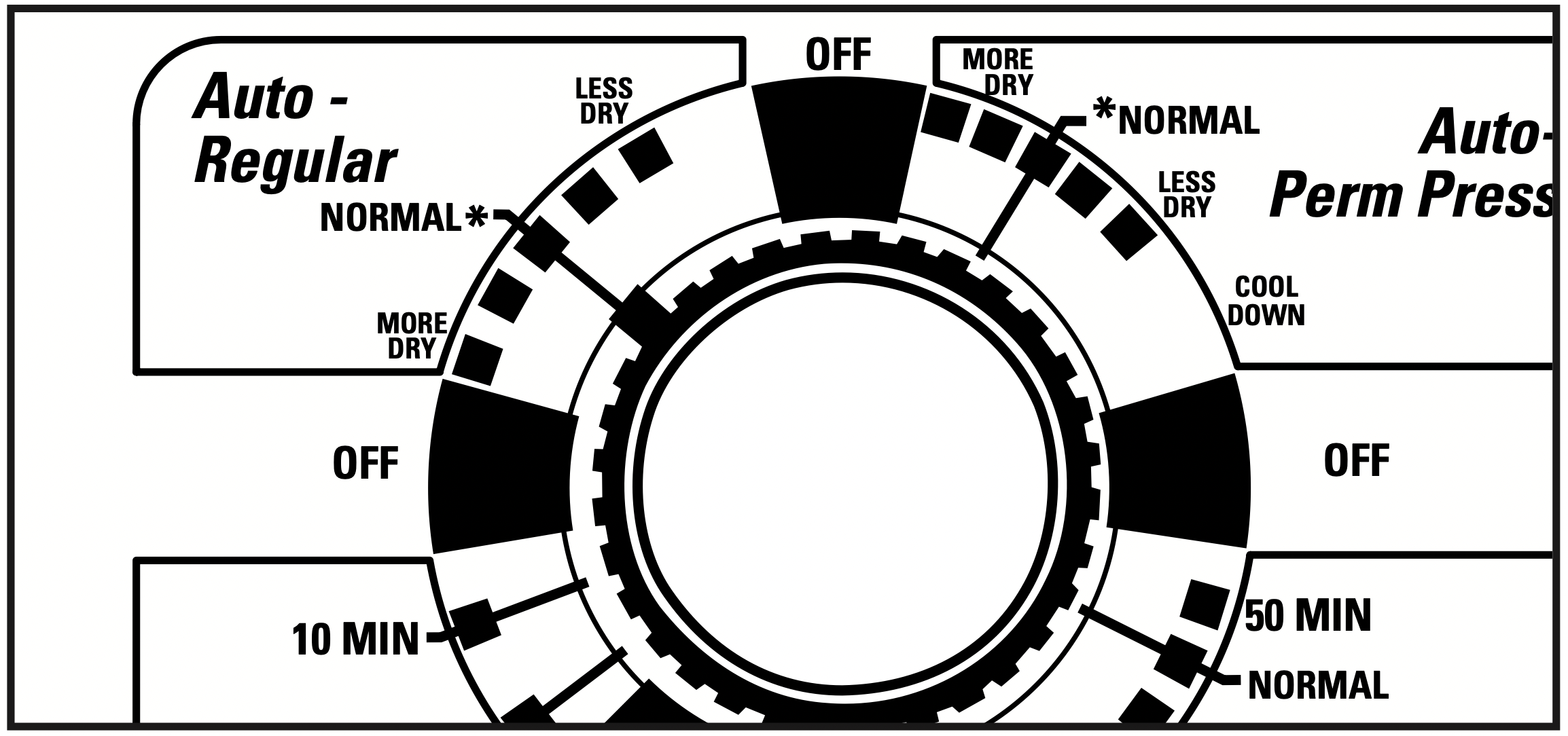
- Energy-preferred automatic setting.
- For most normal loads.
Set toward More Dry
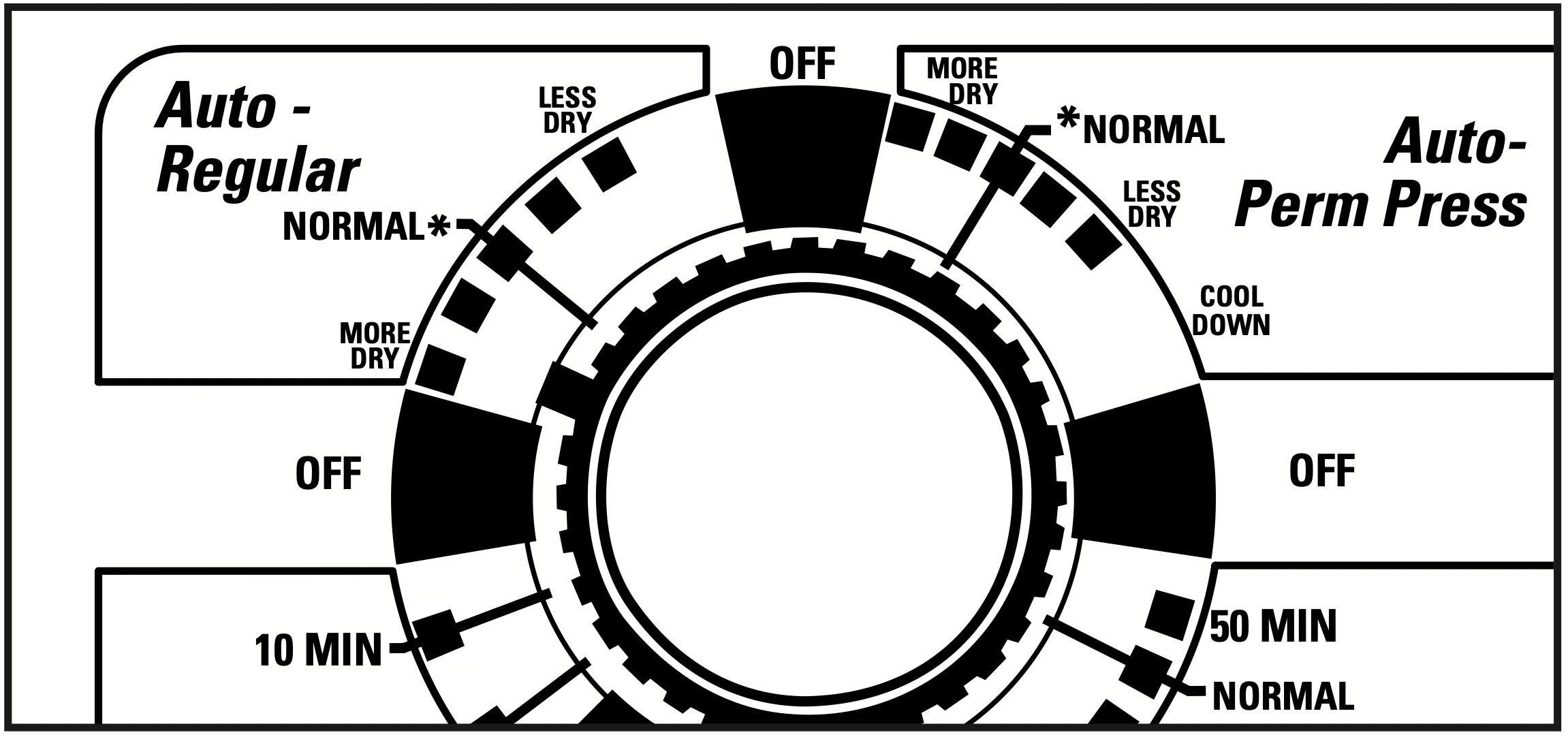
- For loads that include heavyweight fabrics.
- If you desire to remove more moisture.
Set toward Less Dry

- For lightweight fabric loads.
- If you desire to remove less moisture.
- For very small loads.
SUGGESTED FABRIC AND DRYING SELECTIONS
|
Cycle Suggested |
For Clothes Load/Fabrics such as: |
|
Automatic Regular |
|
|
Automatic Permanent Press and Knits |
|
|
Delicates |
|
|
Timed |
|
|
Special Instructions |
|
| *Pillows |
Check ticking for holes or weak seams where feathers or filling could escape. DRY ONLY ONE PILLOW AT A TIME. Set dryer for maximum time. Stop dryer occasionally and shake pillow to redistribute filling for more even drying. Check pillow at end of drying time—if not completely dry, return pillow to dryer and reset for more drying time. Feather pillows dry very slowly and must be dried completely to prevent mildew. DO NOT tumble dry pillows containing kapok. |
The terms High, Medium and Low Heat are those usually found on fabric care labels. For best results, follow your specific fabric care label.
HOW TO SORT CLOTHES
Sort by Surface Texture

LINT PRODUCERS—such as terry toweling and chenille—give up lint.
LINT COLLECTORS—such as manmade fibers and napped fabrics like velveteen and corduroy—attract lint. These must be dried separately.
Sort by Fabric

In addition to sorting to reduce lint collection, we recommend that you wash fabrics of similar construction together whenever possible.
Sort by Color

Sort by Weight

For information on tumble drying extra-large items and different fabrics and loads, see the Suggested Fabrics and Drying Selections guide.
ENERGY-SAVING TIPS FOR YOUR DRYER
- Sort clothes by weight so you won’t have to run an extra cycle for one or two heavier, slowerdrying items.
- Do not overload dryer. The drum should be no more than half full of wet articles. For efficient drying, clothes need to tumble freely. Overloading prolongs drying time and produces uneven drying.
- Use Automatic Drying Cycle whenever possible to help prevent overdrying and to save energy.
- To help prevent ironing, remove garments immediately at the end of the drying cycle and place on hangers.
- Dry your clothes in consecutive loads. Using a “warm” dryer will save energy.
- Clean lint filter each time you dry.
- Clean dryer exhaust ducting at least once a year. A partially clogged exhaust can lengthen drying time.
CARE AND CLEANING
USER MAINTENANCE INSTRUCTIONS
- Wipe the cabinet with a damp cloth. Occasionally wash it with mild soap and water and then apply a light coat of appliance polish to help preserve the finish.
- Keep the area around and underneath your appliance free of combustible materials such as lint, paper, rags and chemicals.
- Keep the floor around your appliance clean and dry to reduce the possibility of slipping.
For long vacations
Be sure water supply is shut off at faucets. Drain all water from hoses if the appliance will be exposed to freezing weather.
Always shut off the gas valve before leaving on vacation.
Winterizing instructions for your washer:
The washer cannot be operated in freezing temperatures. Before you store the appliance, remove water from all parts of the washer.
- Turn off water supply faucets. Disconnect hoses from faucets and drain.
- Add 1 gallon (3.8 liters) of nontoxic RV antifreeze (available from a hardware or recreational vehicle store) to the washer tub.
- Push in the timer knob, turn the knob to the right to a spin cycle and pull out the knob.
- Let the washer spin for 1 or 2 minutes to let all the water drain out. Some but not all of the RV antifreeze will be expelled.
- Push in the timer knob, disconnect the electrical plug, dry the tub interior and close the lid.
- Store the appliance in an upright position.
- Before reusing the washer, after storage, run the washer through a cycle to rinse out the antifreeze.
Washer
- Wash basket.
After each use, leave the lid open to allow moisture to evaporate. Clean thoroughly with nonabrasive household cleanser to remove deposit left by heavily soiled clothes. Do not use harsh, gritty or abrasive cleaners. - Lint Filter.
Clean the filter at the bottom of the agitator after every load for the best filtering results. See Operating Your Washer section.
Dryer
If your dryer is exhausted to the outside, inspect and clean the dryer exhaust ducting at least once a year. A clothes dryer produces combustible lint. When the dryer is not exhausted to the outside, this lint is more apt to accumulate in and near the dryer, which could create a fire hazard.
How to reduce the possibility of a fire hazard, if your dryer (gas dryers must be exhausted outside) is not exhausted to the outside:
- Clean the lint filter before every load. See Operating Your Dryer section.
Lint can gather inside the dryer and create a Fire Hazard. This lint should be removed at least every 2 or 3 years, or more often, depending on dryer usage.
WARNING — Electrical Shock and Personal Injury Hazard
- Unplug the power supply cord or turn off the electrical power.
- Do not put hands inside the cabinet.
- Make sure the dryer is cool.
- More than one person is required to lift, tilt or move the washer/dryer because of its weight and size.
Failure to do so could result in electrical shock, injury or damage.
Cleaning should be done only by a qualified person.
- Unplug unit from electrical supply or turn off electrical power.
- Remove back panel from dryer. (See Installation Instructions.)
- Avoid touching wires and thermostats.
- Remove lint from boxed-in area with a soft brush or vacuum cleaner.
- Replace back panel, reconnect and level the appliance.
QUESTIONS?
USE THIS PROBLEM SOLVER
|
PROBLEM |
POSSIBLE CAUSE |
|
WASHER OR DRYER WON’T START |
|
|
WON’T DRAIN |
|
|
WATER LEAKS |
|
|
WASHER WON’T SPIN AND COMPLETE CYCLE |
|
|
CLOTHES ARE ABNORMALLY WET AFTER SPIN |
|
|
APPLIANCE IS NOISY |
|
|
WATER DOES NOT ENTER OR ENTERSS LOWLY |
|
|
WATER TEMPERATURE INCORRECT |
|
|
WASHER PAUSES IN CYCLE |
|
| GREASY OR OILY STAINS ON LAUNDERED GARMENTS |
These are sometimes called “invisible stains” because you may not notice them before washing clothes. However, if oily soils are not completely removed in the wash cycle, the oily spots may pick up dirt from the wash water. The spots will then be very visible. They are not caused by the washer. Wash synthetic garments as soon as possible after wearing. Use more detergent than normal and the hottest water the fabric can stand. If spots appear, rub in undiluted liquid detergent, let stand 30 minutes and rewash using hottest water fabric can stand. |
| YELLOWED CLOTHES |
|
| BLUE OR GRAY COLOR STAINS |
Improper use of fabric softener. Never pour fabric softener directly on clothes; always dilute before adding to rinse water. |
| GRAYED CLOTHES |
Follow these steps:
To restore grayed clothes — Most grayed clothes can be at least partially restored by the following procedure:
|
|
HEAVILY SOILEDAREAS such as collars and cuffs |
|
|
LINT OR RESIDUEON CLOTHES INCYCLE |
To correct — All residue except pilling can usually be removed from garments through use of correct laundry procedures. |
|
SNAGS, HOLES, TEARS, RIPS OR EXCESSIVE WEAR There is no solution once this type of damage has occurred. |
|
| WRINKLING IN PERM PRESS AND “NO-IRON” ITEMS |
To remove Stubborn wrinkles –
*NOTE: If you follow good laundry procedures and permanent press clothes still come out wrinkled, the finish may not be good quality. Also, in permanent press synthetic/cotton blends, the cotton portion of the fabric can eventually wear away leaving only the synthetic. Since the cotton has a resin finish that imparts the memory, a loss or decrease of permanent press performance will result. |
|
SHRINKAGE, GENERAL |
|
|
SHRINKAGE, KNITS |
|
|
CLOTHES TAKE TOO LONG TO DRY |
|
|
WASHER OR DRYER WON’T START |
|
